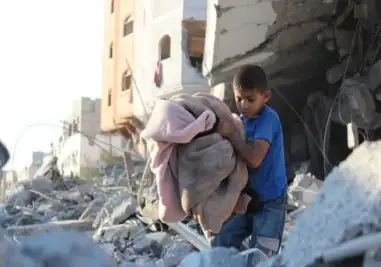African Health Sector under stress
Africa has a variety of problems, fortunes and misfortunes but now the most pressing one that needs urgent attention and concerted efforts is that of the appalling health conditions because it concerns our life and death episodes. High rates of disease and premature mortality in sub- Saharan Africa have been costing the continent so dearly. Poor health causes pain and suffering, reduces body energies, and makes millions of Africans less able to cope with life, let alone enjoying it. The economic conditions are immense. Poor health shackles human capital, leads to increased absenteeism at work, reduces performance and entrepreneurial activities, and holds back real social- economic development.
Africa child mortality is a tremendous success story that has barely been recognized. The biggest and best story is huge decline in child mortality that is now gathering pace across Africa. 16 out of 20 Africa countries which have had detailed surveys on living conditions since 2007 reported falls in their child mortality rates (this rate is the number of deaths of children under five years per 1,000 live births). According to the World Bank, Twelve countries had falls of over 4.8% a year, which is the rate of decline that is needed to meet the Millennium Development Goals of cutting by two thirds the child mortality rate between 1995 - 2015. Four countries; Senegal, Rwanda, Kenya and Uganda have seen falls of more than 8% a year, almost twice the MDG rate and enough to halve child mortality in about a decade. These four now have the same child mortality as India, one of the most successful economies in the world during the past decade.
The decline in Africa child mortality is spreading up. In most countries it is now falling about twice as fast as during the early 2000s and 1990s. More striking, the average fall is faster than it was in China in the early 1980s, when child mortality was declining at around 3% a year, admittedly from a lower base. The only recent fall comparable to the largest of those in Africa occurred in Vietnam between 1987 - 1992 and 1993 - 1997, when child mortality fell by 37%- and even that was slower than that of Senegal and Rwanda. Rwanda's child mortality rate more than halved between 2006 - 2008 and 2011 - 12. Senegal cut its rate from 129 - 72 in five years (2006 - 2012). It took India a quarter of a century to make that reduction. The top rates of decline in African child mortality are the fastest seen in the world for at least 30 years.
The striking thing about the falls is how wide spread they have been. The four biggest successes are in the East, West and central Africa. The success stories come from Africa's two most populated countries, Nigeria and Ethiopia, and from tiddlers such as Benin (with a population of 9.5 millions). You might expect that countries which reduced their birth rates the most would also have cut child mortality comparably. This is because such countries have moved furthest along the demographic transition from poor, high - fertility status to richer, low fertility status. But it turns out that it is only partly true. Senegal, Ethiopia and Ghana all reduced fertility and child mortality a lot. But Kenya and Uganda also did well on reducing child deaths, though their fertility declines have stalled recently. So it cannot be just about lower birth rates. Liberia, where fertility remains high, did badly on child - mortality, but so did low fertility places such as Namibia and Lesotho. The link between mortality and broader demographic change seems weak.
What makes a bigger difference? I can say is some combination of broad economic growth and specific public - health polices notably the increase in the use of insecticide - treated mosquito nets (now distributed free of charge by the government of Uganda to its citizens) coupled by increased public awareness and capacity building for knowledge enhancement on the need and benefits of reducing child mortality, increased antenatal services, immunization campaigns, peace and security, and improved access to health care service. Ethiopia, Ghana, Rwanda and Uganda have been among Africa's star economic performers recently, with annual GDP growth averaging over 6.2% in 2005 - 2011. At the end of the scale, Zimbabwe saw its GDP fall and mortality rise. This seems intuitively right. An increase in national income should reduce mortality not just because it is usually associated with lower poverty and better nutrition, education and shelter, but also because growth can be a proxy for other good things; more sensible economic policies, good health infrastructure, more democratic - accountable governments and a greater commitment in improving people's living standards.
But growth offers no guarantees. High mortality Liberia actually saw impressive GDP increases whereas Senegal, whose record in child mortality is second to none, had a rather anemic growth by recent African standards (e.g. 3.8% a year, half that of Rwanda). That 'miracle of low mortality" has taken place in different circumstances suggests that there can be no single cause. To look for other explanations therefore we can study the role of foreign aid, the media, Non government organizations / civil society organization, charities by the churches and community participation and involvement in the provision and management of health services.
The central position of women in household management and reproductive health must be emphasized. Inter-sectoral interventions to complement and sustain hygiene, environmental health, provision of clean water are important. These factors make crucial contributions to an enabling environment for health improvement and reduction of child mortality. They are as important as improving incomes. Without them, the efficiency, effectiveness and efficacy of medical interventions are greatly reduced. Much health improvements can be achieved by reforming community-based healthcare systems to use available local human and financial resources more productively, and developing institutional frameworks with shared responsibilities for health care provision to decentralized entities, civil society and the non-government sector, we can ably spur reform. In sub-Saharan Africa, private voluntary organizations already assume a large share of the responsibility for providing community based health care, and can do more since legal and regulatory environment are becoming increasingly conducive to the provision of health service by the private sector.
Developing countries can also advance a human-centered cost- effective package of basic health service delivered through networks of locally managed health centers, dispensaries and small hospitals in rural and semi - urban areas, can go a long away to respond to the actual needs of the households and reduce the burden of disease in Africa. Together we can do away with the corruption and mismanagement of public resources. Correcting the many sources of wastes and inefficiencies should take a top priority. Inefficiencies in the procurement of health utilities, storage, distribution, prescribing and the use of drugs are so extensive, for instance, the consumers in some African countries like Uganda, Tanzania, Malawi and Zambia get benefit of only $ 15 dollars worth of drugs for each $100 dollars worth spend on drugs by the government. Inequalities prevail to the extent that poor households in many countries have no access to quality healthcare at times of serious illness or injury.
Critically important to health system reform is better management of pharmaceuticals, health sector personnel, medical workers and redeeming of the health infrastructure and equipment. By giving more attention to the formulation and implementation of practically relevant policies on primary health care, wise use and sustainable management community based health care system/health facilities, proper nutrition, clean water, and sanitation.
Experience suggests that a package of such focused, goal-directed and result - oriented services can be provided in a typical low-income African country like Tanzania, Uganda, Gabon or Chad for as little as $ 15 dollars per capita per year. This compares with average per capita expenditure on health from all source in sub Saharan countries like Nigeria, Central Africa Republic, Democratic Republic of Congo, and Niger to more than $ 100 per capita in Botswana, South Africa and Algeria. The key to improving the practical use of resource is to reallocate funds to pro-people cost effective service engineered at the local level.
Interestingly many Africans are distanced from the truth and some of the basic reality facts about the life and health living. For instance, there is a debate on whether smokers should quit smoking on the ground that it causes lung cancer. The main reason for this lies in the question of whether it is logical to 'die' with 'healthy' lungs! One man in my home village gave me an example of his grandmother who had been smoking a pipe with tobacco over 65 years and was still going on at her age of 85 years, as he vowed not to do away with smoking because to him, "smoking causes no health danger". This shows that there is a need for more capacity building and knowledge enhancement through community health education to empower the masses with basic health information using a multimedia approach to promote public health awareness.
Over 35 Africa countries lag behind other developing countries in the vital task of improving their healthcare systems. The average life expectancy of 15 years less than the rest of the world's low income developing countries, maternal mortality at 700 women per 100,000 live birth, almost double that of other low-and-middle-income developing countries and more than 40 times greater than the developed countries. Tens of millions suffer from malaria each year, millions are inflicted by tuberculosis, and the AIDs epidemic seriously threatens several of the continent's nations. It is no surprise therefore that ill health has a powerful effect on the economic progress. Productivity in some countries could increase by 15 percent if illness and mental problems/ disability were attacked more seriously.
If these factors alone mattered, Africa would have made more progress in improving the health of its people and henceforth move forward on economic, social and political fronts. One obstacle is the weak leadership, poor governance of health systems, lack of political will and commitment to better health service delivery, the redundant budgeting systems that breed corruption and mismanagement of public resources as promises are not always matched with performance upon effective evaluation. More so, African leaders having dug the grave of the health sector in their cradle are happy to die abroad! Although African leaders, over the last two decades made numerous promises to a adopt the prime elements of enabling health environment-namely better primary and preventive health care-the health sector is still under stress, they have seldom made the policy/institutional frame work and financial commitments necessary to bring it about. Africa governments still devote more attention and funding for health to high priced-curative and relatively cost-ineffective medical care service provided through hospital and health centers.
Better health in Africa hinges on clearly defined policy strategies and people-focused priorities, with rules of engagement that that facilitate the participation and involvement of all stakeholders, networking and information sharing for the households / communities to be able to quest for, obtain and use health services at a less cost and use them more effectively. This requires a strong political commitment to improving health as reflected in preferential spending and exhibition of transparency in allocation and management of resources in the health sector. An inter-sectoral perspective in planning and operating systems of the health care including provision of safe water and sanitation facilities, food and nutritional security, income enhancement at household levels, family planning, pregnancies, immunization and ensuring greater access/ geographic proximity of services as the systems' responsiveness to household healthcare needs. Although we are standing between the devil and the deep sea- but if the cup fits, let us wear it-to improve people's lives and livelihoods.










































